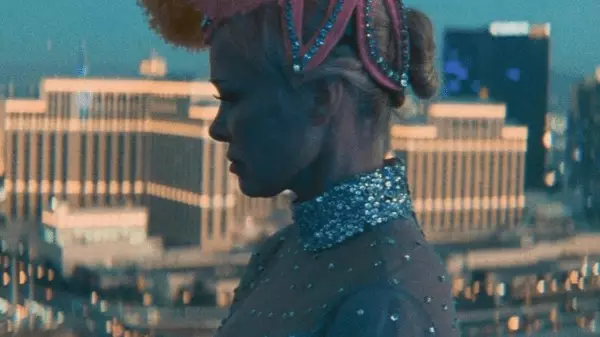Pamela Anderson’s much-anticipated return to the screen embodies a significant moment in cinematic history, evoking reflections on fame and the female experience in Hollywood. Her role in Gia Coppola’s upcoming film, *The Last Showgirl*, serves as a powerful reminder of the complexities surrounding women in the entertainment industry. Anderson’s on-screen journey mirrors that of iconic figures like Marilyn Monroe, bringing forward the nostalgic charm that accompanies the archetype of the quintessential blonde bombshell.
Coppola’s insightful direction in *The Last Showgirl* highlights the struggles and resilience of a former star. Set against the backdrop of a showbiz world that often demands conformity and youthfulness, Anderson’s character, Shelley, echoes the sentiments of actresses who have navigated similar challenges throughout the decades. As her show in Las Vegas comes to a sudden end after a remarkable 38-year run, Shelley’s predicament sheds light on the harsh realities many aging actresses face – a reflection that Coppola has taken note of in the legacy of starlets like Monroe.
In her portrayal of Shelley, Anderson dives deep into the duality of her own experiences. Her acknowledgment of a career often scrutinized for its superficial aspects resonates throughout the narrative. Anderson’s comments during a panel discussion reveal that her connection with Shelley is deeply personal, bridging the gap between her public persona and her authentic self. She states, “Most of my career has been about the external, and not the soul of what really happens behind the superficial qualities that people even hire you for.” This introspection reveals a more profound dialogue about womanhood, artistic expression, and emotional depth that is often overlooked in glamorous portrayals.
Within the film, Anderson’s attempts to reconnect with her daughter, portrayed by Billie Lourd, layer the narrative with multigenerational perspectives on fame and motherhood. The push and pull between pursuing personal aspirations and meeting familial responsibilities adds another dimension to Shelley’s character. It is not just a reflection of Anderson’s life but a universal theme echoed in the struggles of many women in a society where expectations often overshadow individual desires.
*The Last Showgirl* promises to weave a rich tapestry exploring the lives of women in the spotlight, offering a narrative that is as poignant as it is reflective. Anderson, often viewed through the lens of her past, emerges as a figure of both vulnerability and strength, paralleling the complexity of the characters that have come before her. Coppola’s vision strives to convey not only an homage to the glamorous past of Hollywood but also an evolution of the narrative where women can embody greater depth and resilience.
As the premiere date draws near, audiences eagerly anticipate not just entertainment but a profound exploration of identity, challenging traditional notions of femininity and celebrating the multifaceted nature of women in film. Anderson’s comeback is thus not only a revival of a star’s career but an invitation to redefine what it means to be a woman in the entertainment sphere today.


Leave a Reply